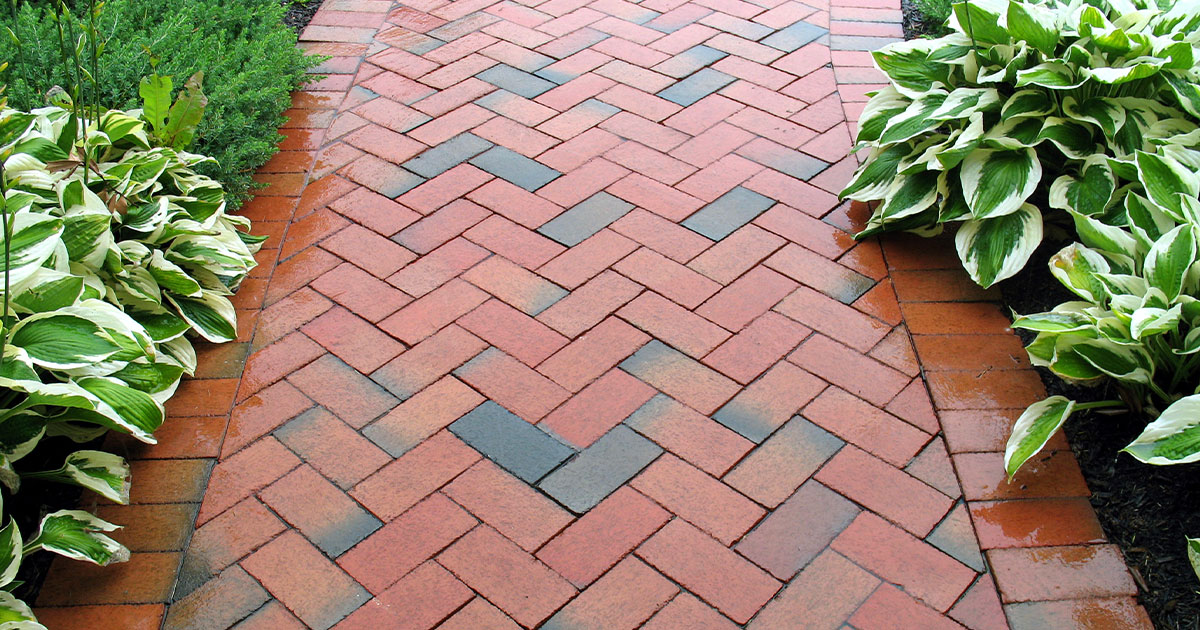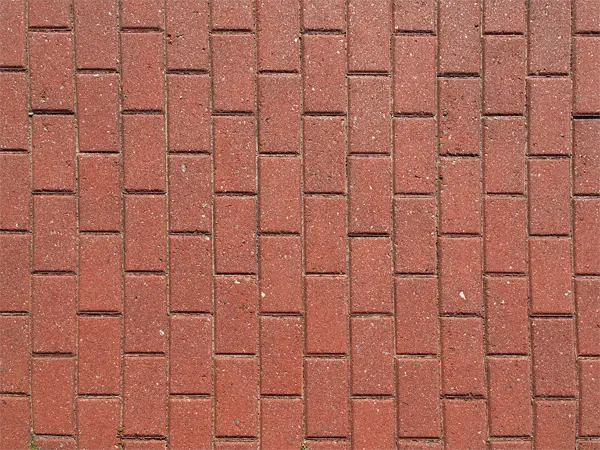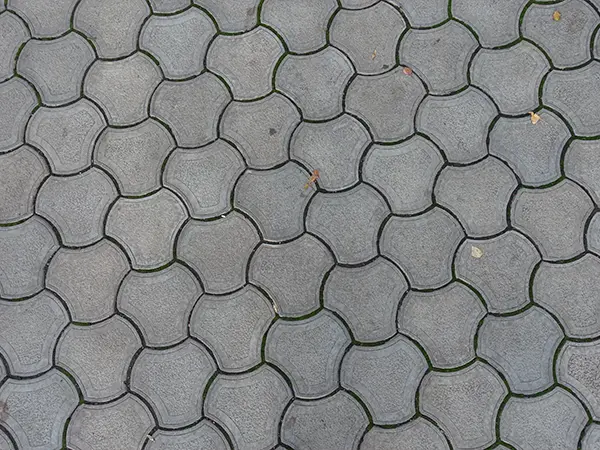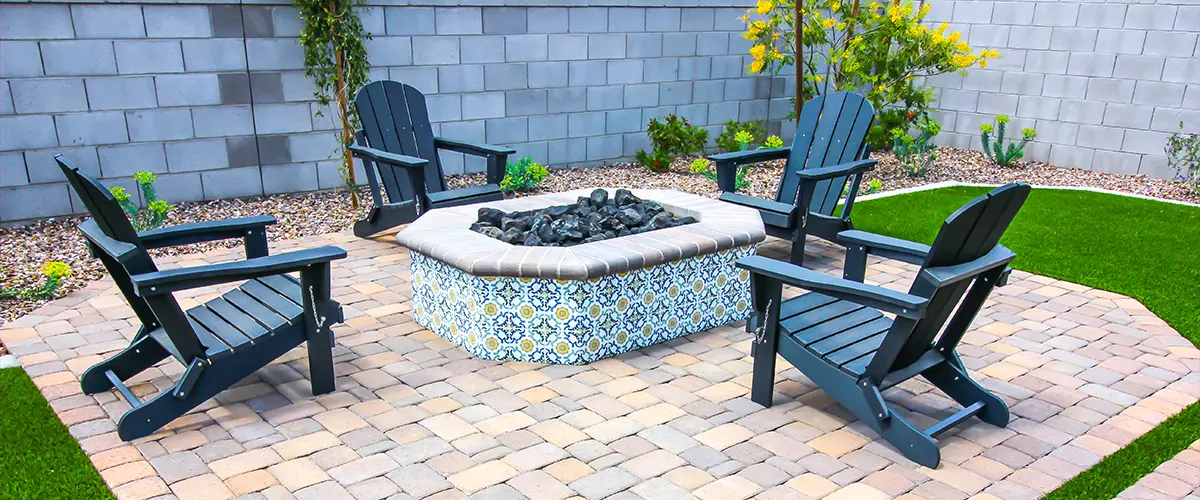Bricks VS Concrete Pavers
Embarking on the journey to design the perfect outdoor oasis involves making key decisions that significantly impact the overall look, functionality, and durability of your space. Among these choices, selecting the right paving material stands out as crucial.
Brick and concrete pavers each bring their own set of advantages, styles, and textures to the table, shaping the atmosphere of your outdoor haven.
This comprehensive guide aims to explore the differences between brick versus concrete pavers, diving into their distinct features and benefits.
By comparing these popular options, we’ll equip you with the knowledge to choose the material that aligns with your vision, preferences, and the specific demands of your outdoor project, ensuring a beautiful and lasting enhancement to your home’s exterior.
Keep reading to find out more!

Characteristics of Concrete Pavers
- Size
Concrete pavers are manufactured in a variety of sizes, from small, intricate shapes perfect for detailed mosaic patterns to larger, more robust slabs suitable for creating a bold statement.
This diversity allows for custom installations, from winding pathways to expansive patios, accommodating any design aesthetic.
- Shape
The manufacturing process of concrete pavers enables the production of an almost limitless array of shapes, including interlocking styles that enhance stability and ease of installation.
From traditional rectangles and squares to more contemporary hexagons and irregular forms, concrete pavers can fulfill any design requirement.
- Color
- Texture
Concrete pavers offer a variety of surface textures, from smooth finishes that suit a modern, sleek aesthetic to embossed or tumbled textures that emulate the natural wear of stone for a more rustic look.
This versatility ensures that there’s a concrete paver to match any design theme or safety requirement, providing necessary traction in areas prone to wetness.
- Flexibility
The adaptability of concrete pavers to different patterns and designs is unmatched. Whether creating a simple, uniform look or an intricate pattern that combines various shapes and colors, concrete pavers offer the flexibility to realize any vision, making them suitable for all types of outdoor spaces.
If you’re in the process of deciding for other landscaping materials, you might also be interested in our blog post about pea gravel vs. crushed stone.
- Durability
While concrete pavers are durable and capable of withstanding heavy foot traffic, their longevity can be influenced by the quality of installation and the environment.
They are generally resistant to cracking due to their interlocking design, which allows for some movement without damage, and are strong enough to support vehicles when used in driveways.
- Maintenance
- Cost
The initial cost of concrete pavers is typically lower than that of natural stone or clay brick pavers, making them a budget-friendly option for many homeowners.
However, the total cost can vary depending on the complexity of the design, the size of the area, and additional features such as borders or accents.
Attributes of Clay Brick Pavers
- Size
- Shape
The shapes of clay brick pavers are generally more uniform and rectangular, offering a classic and timeless look. While there are variations, the range is not as extensive as concrete pavers.
This uniformity can be advantageous for creating traditional patterns such as herringbone or basket weave that require precise alignment.
- Color
- Texture
- Flexibility
- Durability
- Maintenance
- Cost
Bring Your Dream Outdoor Space to Life with Legacy Outdoor Services
Ready to transform your outdoor space? Legacy Outdoor Services is here to help you select the perfect paving material for your project. Contact us today to explore our wide range of outdoor living solutions and start your transformation!
How to Choose Between Brick and Concrete Pavers
- Material Makeup: Consider the composition of each material. Concrete pavers offer more color and shape variety due to their manufactured nature, while clay bricks offer a natural look and feel.
- Appearance: Your aesthetic preference plays a crucial role. Do you prefer the uniform, classic look of brick or the customizable options available with concrete?
- Durability: Both materials are durable, but their performance may vary based on environmental conditions and the specific application. Evaluate the expected traffic and weather exposure.
- Texture: The texture affects both the appearance and functionality, particularly in terms of slip resistance.
- Installation: Concrete pavers might offer more flexibility in design and easier installation due to their interlocking shapes, whereas brick may require more precision to maintain pattern integrity.
- Cost: Budget considerations are essential. Concrete pavers generally provide a more cost-effective solution upfront, but the long-term durability and aesthetic of brick may offer better value over time.
- Environmental Impact: Consider the sustainability of each option. Clay bricks are made from natural materials and can be more eco-friendly, while concrete pavers offer permeable options that can reduce runoff and promote groundwater recharge.


The Better Choice: Brick or Concrete Pavers
Brick Pavers
| Pros | Offer a timeless aesthetic, with natural color that doesn’t fade over time. They are incredibly durable, capable of lasting for decades with minimal maintenance. Brick pavers are also eco-friendly, made from natural clay. |
|---|---|
| Cons | Limited in color and shape options, which might not suit all design preferences. Higher initial cost compared to concrete pavers. |
| Pros | Wide variety of colors, shapes, and textures available, allowing for more design flexibility. Generally, they are more cost-effective than brick pavers and easy to install. |
|---|---|
| Cons | Color can fade over time due to exposure to elements. May require more maintenance to prevent moss and weed growth. |
Which is More Suitable for Different Outdoor Projects?
Concrete is ideal for those seeking a customizable and budget-friendly option, perfect for patios, driveways, and walkways where aesthetics are a priority.
Brick, on the other hand, is best suited for areas where durability and a classic look are desired, such as historic or traditional landscapes.
Comparing Costs
Environmental Impact

The Right Decision For Your Home
Ultimately, the choice between brick and concrete depends on personal preference, the specific requirements of your outdoor project, and your budget.
Both materials can enhance the beauty and functionality of your outdoor space, offering distinct advantages.
Considering the factors outlined can help you make a choice that you’ll be satisfied with for years to come.
FAQs
Ready to Transform Your Outdoor Living? Contact Legacy Outdoor Services Today!
Whether you’re drawn to the classic charm of brick or the versatile appeal of concrete pavers, Legacy Outdoor Services has the expertise and resources to bring your vision to life. Don’t wait to create the perfect backdrop for your outdoor gatherings and relaxation in Bryan, TX.
Contact us today at (979) 575-6019 or visit our website to schedule a consultation and start your transformation journey!
